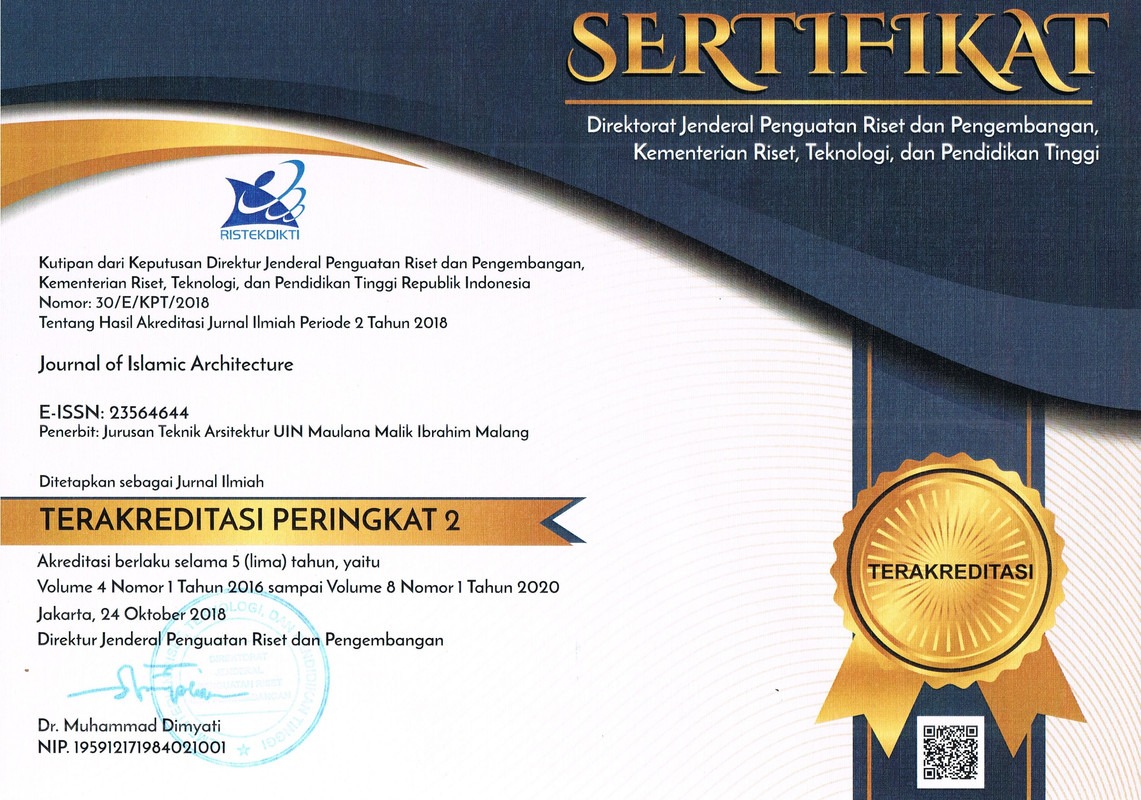TIPOLOGI RUANG DAN WUJUD ARSITEKTUR MASJID TRADISIONAL KALIMANTAN SELATAN
Abstract
These days, many researches on traditional architecture of South Kalimantan focus merely on traditional settlements and houses. Particularly, the research on places of worship has been conducted in small numbers, and it is sometimes never publicized, especially in scientific magazine or journal. Meanwhile, the construction of some new mosques in South Kalimantan has no longer concerned the local architecture. This research alone aims to attain architecture’s entity as the place of worship for the people of South Kalimantan, especially for Banjarese Tribe as the majority in South Kalimantan. Traditional Banjarese Tribe is known as an islamic tribe. They used to be called Dayak Tribe since they had faith in traditional religions such as animism and dynamism. As Muslim people, they perform their prayers in a place of worship called mesigid (mosque). The research applies the method of case study. Based on the result of field and literature study, the architecture entity of Banjarese’s place of worship has some specific features that are different from other mosques in other regions. From the analyses, it can be concluded that the traditional mosques of South Kalimantan have three kinds of room, which are palataran, praying area, and mihrab (a chamber indicating the direction of Mecca). Palataran is the porch or the terrace surrounding the mosque, while the praying area and mihrab are rectangular. Traditional mosques in South Kalimantan have their own entity which is formed by the plan of praying area and mihrab, as well as their three layered-roof. The roof in these mosques has a sharp angle (60o) and an acute angle (20o). Furthermore, the overall entity of the mosque symbolizes hayat tree (Dayak Tribe), and the ornaments (pataka/patala) found on the roof top is a symbol of hornbill. Both symbols are the symbols of identity and mythology of Dayak Tribe.
Keywords
DOI: https://doi.org/10.18860/jia.v1i2.1722
Refbacks
- There are currently no refbacks.






